In the 19th century, especially after the ratification of the national constitution, the Western Armenians began to embark upon regulating and developing their domestic life in spite of the existing numerous obstacles and prohibitions. Permission for building Armenian educational and cultural institutions was acquired with great difficulty.
The first Armenian schools in the Ottoman Empire were established in the 1790s; this work was especially organized by the income of the church, or through the efforts, and on the initiative of, the Armenians in Constantinople. In 1866 there existed over 46 Armenian schools (32 males and 14 females) with 4,700 pupils including 1,472 school girls and 142 teachers. From the middle of the 19th century unisex colleges were opened in all the provincial centers and villages of Western Armenia.
A number of educational and cultural associations were formed on the initiative of the Armenian progressive youth who supported this work greatly. The main aim of these institutions was the foundation of schools and the dissemination of education and enlightenment in different Armenian districts. Among these organizations were “National Society” (Hamazgayin) formed by the efforts of pupils of Murad-Raphaelyan College in 1846, “Siunyats Society” (Siunyats) in Izmir, “The Devoted Society” (Andznver) in Constantinople, “Senekerimian Society” (Senekerimyan) in Sebastia, “The Society of Education Advocates” (Usumnasirats) in Brusa, “The Society of Smbatian and Devout” (Smbatyan and Hogeser) in Kharberd city, “The Devoted Society” (Andznver) in Huseynik, “The Society of Education Advocates and Patriots (Usumnasiracts and Azgasirats) in Mezreh, “Vardan Society” (Vardanyan), “Ararat Educational Society” (Araratyan krtakan) and “Eastern School Society” (Dprotsasirats Arevelyan) in Chmshkatsag, “Artzn Society” (Artznyan), “Education Advocates” (Usumnasirats), “Society of Reading Lovers” (Yntercasirats), “Sisakan” (Sisakan) in Erzurum and others.
The arrival of foreign missionaries in Turkey considerably assisted this work, for they opened many preparatory schools for both sexes and colleges in the first period of their activity, proving the Armenians with an alternative in the sphere of education. The result of these efforts was that many Armenian youths got a chance to continue their education in the best universities of Europe. Afterwards they began teaching in the newly founded Armenian schools.
According to the “Statistical Register” formed by the Education Council of the National Center Department, in 1901 and 1902 there were 803 Armenian national colleges with 81,208 pupils and 2,088 teachers, including 441 colleges with 29,371 pupils(7,772 girls) and 9,21 teachers which were on the territories of Western Armenia. It should be pointed out that all this information refers only to the Armenian Apostolic community. The schools and pupils of both sexes belonging to the Catholic and Protestant communities, as well as the private schools and foreign colleges are not registered in this document although they formed a considerable number. The quarters of Constantinople are not included here either. Thus, there existed over 1,996 Armenian schools with 173,022 pupils; of these 1,251 schools with over 76,548 pupils were on the territories of Western Armenia before World War I.
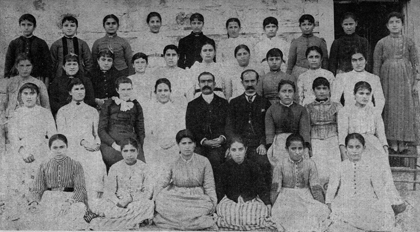
The teaching staff and students of Female College, Marash, 1893
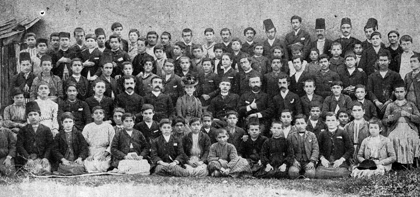
The teaching staff and students of Academia, Marash, 1893
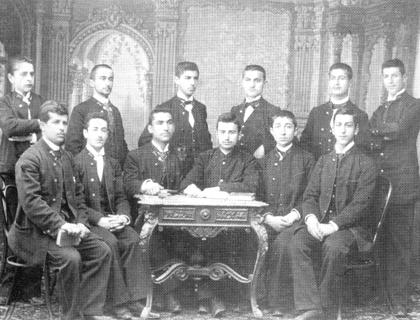
The graduates of Central College, Constantinople, 1893-1894
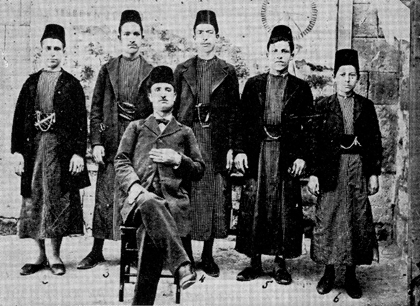
The graduates of Nersisyan National College, Aintab, 1897
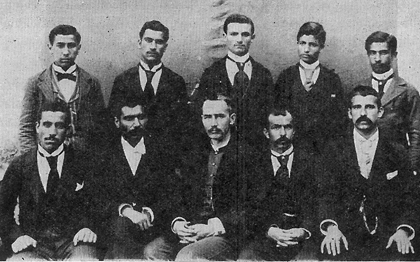
The first graduates and teaching staff of Academia, Hajn, 1897
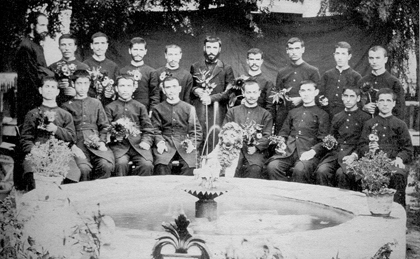
The graduates of monastic school, Armash, 1899-1900
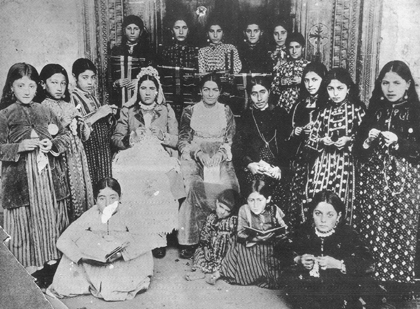
Female College, Erzurum, 1900
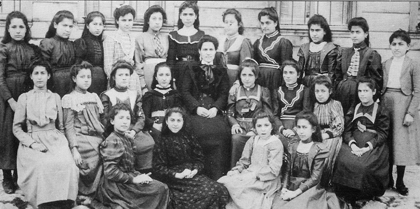
Female College, Adabazar, 1900
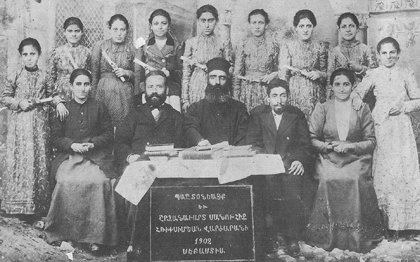
The graduates of Hripsimyan College, Sebastia, 1902
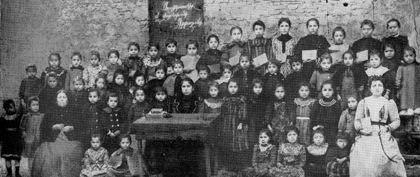
The school girls of Varduhean College, Qrq Aghaj, 1903
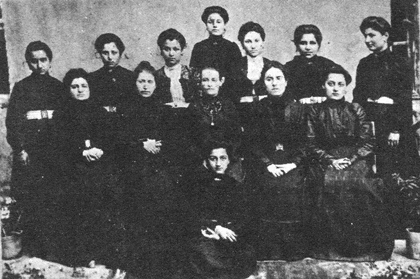
The school girls of Ibranosyan Female Collge, Amasia, 1906
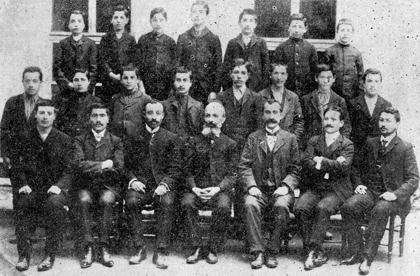
The graduates of National College, Trabizond, 1907-1908
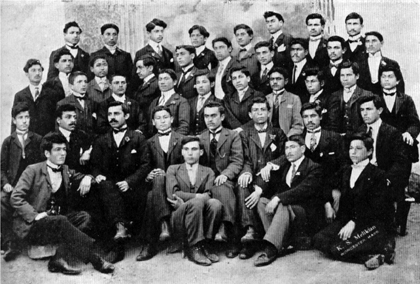
A group photo of underground class of “Euphrates” College, Kharberd, 1908
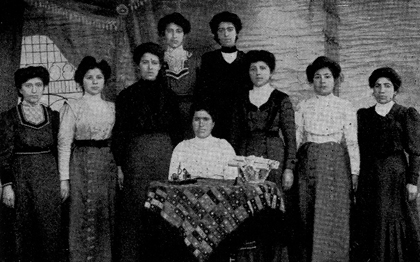
The graduates of Haykanushyan College, Aintab, 1908
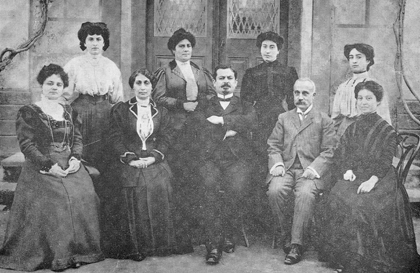
The teaching staff of Hripsimyats Female College, Smyrna, 1908-1909
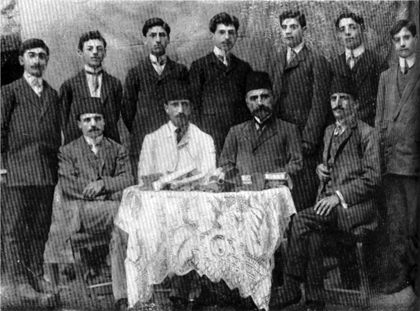
The graduates and teaching staff of Saint Hakob Central College, Kharberd, 1909
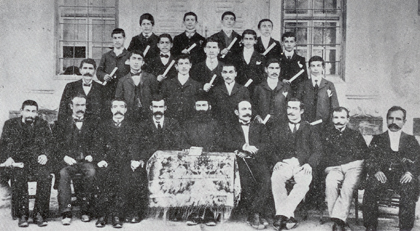
Teachers and graduates of Aramyan National College, Sebastia, 1907
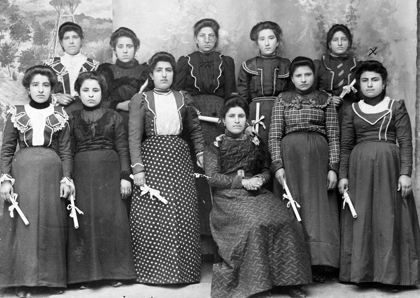
Female College, Aintab, 1910s
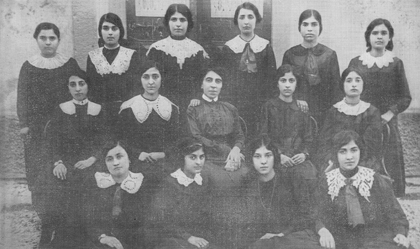
A group photo of Hripsimyats Female College, Smyrna, 1910s
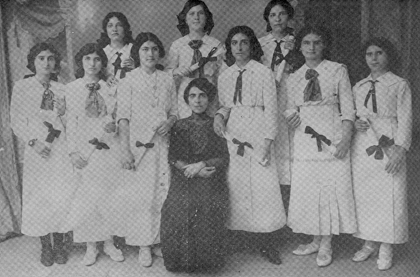
The second group of graduates of Hripsimyats Female College, Smyrna, 1910s
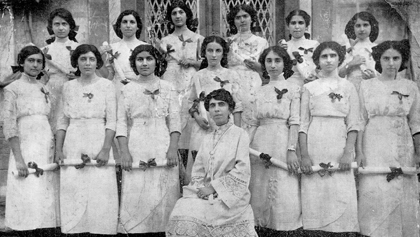
The first group of Hripsimyats Female College, Smyrna, 1910s
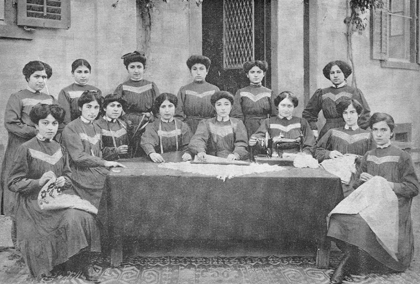
A group photo of the school girls of the seventh and eighth classes of Hripsimyats Female College, Smyrna, 1910s
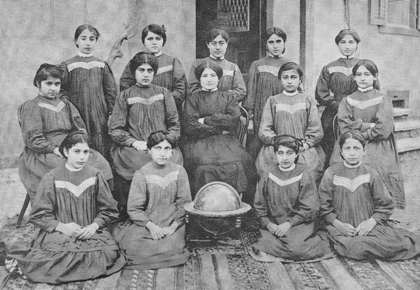
A group photo of the school girls of the sixth class of Hripsimyats Female College, Smyrna, 1910s
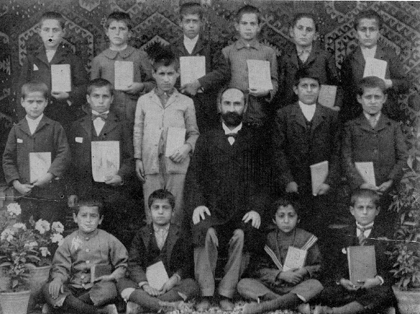
The pupils of Sourb Lusavorchyan National College, Manisia, 1910s
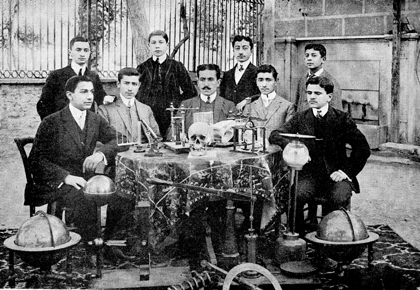
The pupils of the eighth class of Sourb Mesropyan Male College, Smyrna, 1910s
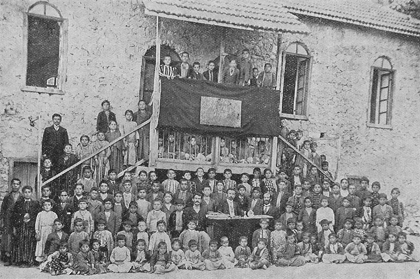
The pupils and teaching staff of Qesap College
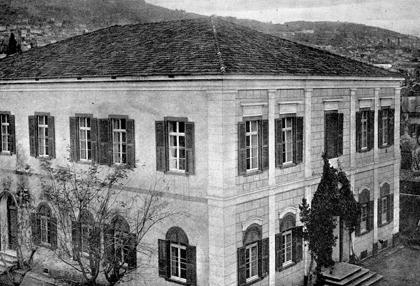
The building of Hripsimyats Female College, Smyrna, 1910s
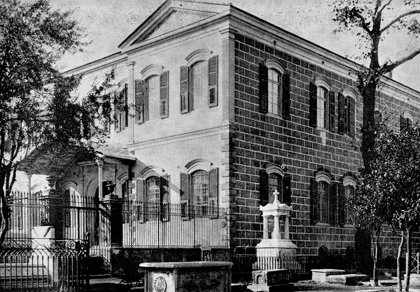
The building of Sourb Mesropyan Male College, Smyrna, 1910s
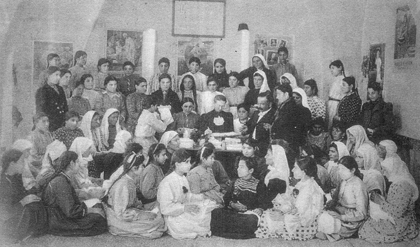
The sewing school of Armenian women, Urfa, 1910s
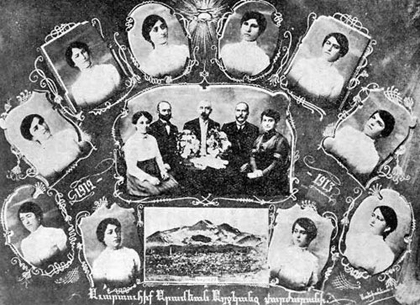
The pupils of Aramyan Female College, Cesarea, 1910s
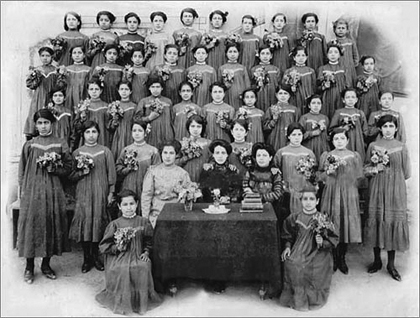
The school girls of Sahakayn School, Konia, 1910.
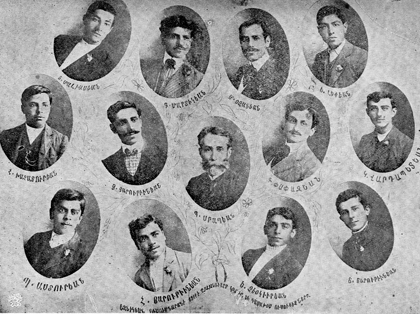
The graduates and teaching staff of Yerznka College, Yerznka, 1911
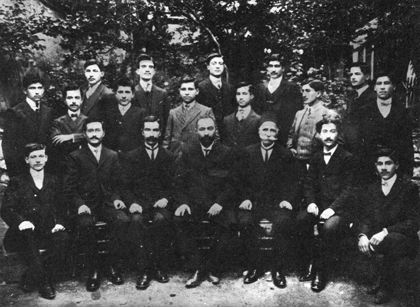
The pupils of Amalya Ibranosayn unisex Crafs School, 1910-1911
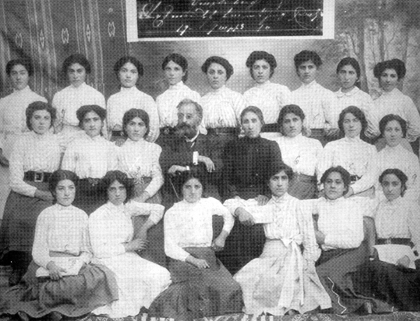
The school girls of Hripsimean College, Erzurum, 1910-1911
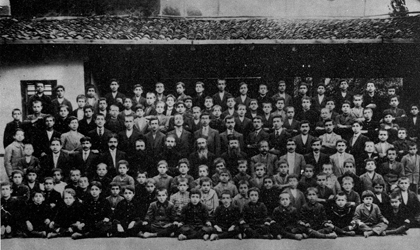
The students of Christ Fathers Higher College, Amasia, 1911
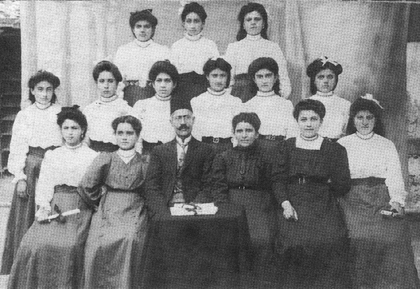
The graduates of Hripsimyan Female School, Sebastia, 1911
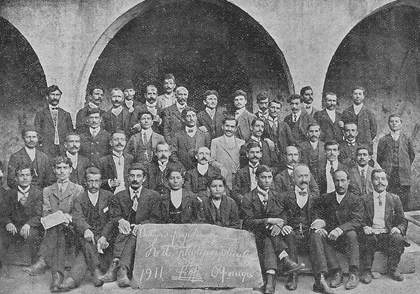
The Summer College, Qeghi, August, 1911
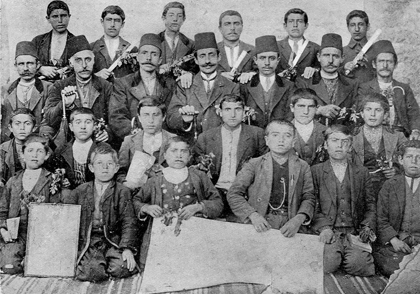
Pupils and graduates of “Khrimyan” College, Verin Tagh, 1911
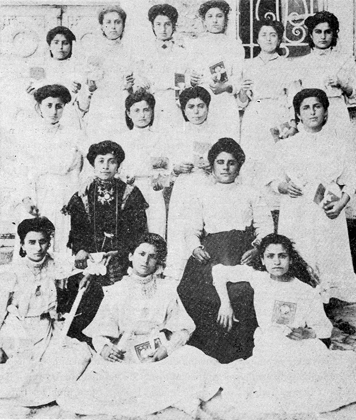
The graduates of Gayanyan College, Adabazar, 1912
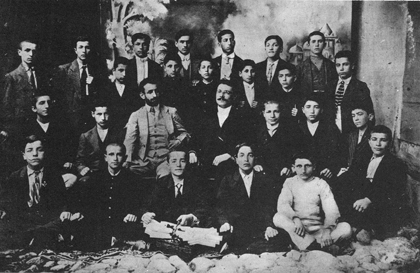
A group photo of graduates of Sourb Astvatzatzin National College, 1912
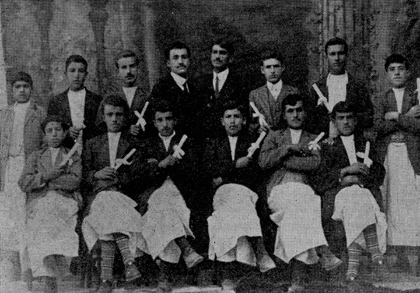
The graduates of Vardanyan College, Aintab, 1913
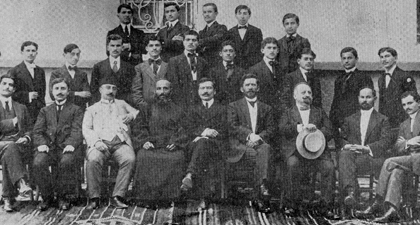
The graduates of Central College, Adabazar, 1913
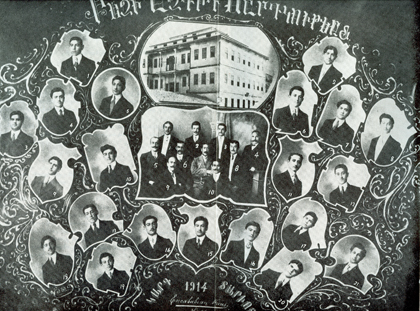
The graduates of Aramean College, Sebastia, 1914
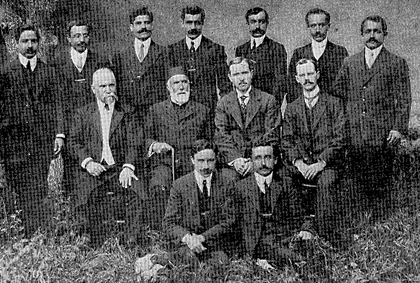
The teaching staff and graduates of Theological Seminary, Marash, 1914
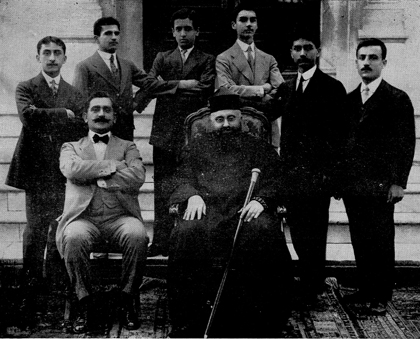
The graduates of Sourb Mesropyan College, Smyrna, 1916
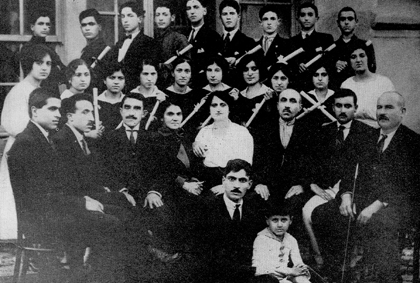
The graduates of National College, Eotemish, 1920-1921





